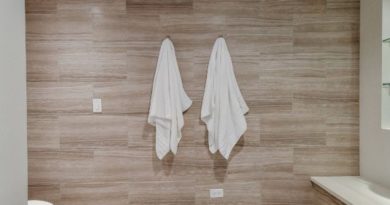Wallpaper Tinting Guide
**Articles may contain links that I earn compensation for if clicked and you make a purchase. As an Amazon Associate, I earn from qualifying purchases. These earnings do not actually impact the price of the product or service.
Wallpaper tinting is an easy and decorative technique best applied to white wallpaper with a raised design. Use this DIY step-by-step guide to find out how you can easily use acrylic painting glaze for wallpaper tinting. Included is a list of painting and home improvement supplies you will need to complete this DIY project.
What You Need: DIY Wallpaper Tinting
Wallpaper
You can use this DIY wallpaper tinting technique to add color and brilliance to brand new white wallpaper with a raised design. Yellow, sun-lightened or irregularly-colored wallpaper can also be brought back to life with wallpaper tinting, if it is in decent shape.
Translucent Glaze
Translucent glaze comes in a can just like paint. Translucent glaze can be turned into color with your selected tint. Translucent glaze has a slow-drying time which makes it ideal for tinting wallpaper.
For added sparkle, consider a translucent iridescent glaze which plays with the light.
You can also purchase pre-tinted glaze if you find a color that you like.
Tip: Opt for a lighter color over a darker color. You can build up color during wallpaper tinting to make the hue darker. Apply multiple layers when wallpaper tinting to achieve the right tone and color.
Glaze Applicators
You will also need a paint roller and a small paint brush for corners. For more control over the lightness of the tint, also have clean rags or sponges on hand.
DIY Wallpaper Tinting
Before applying any tint to the wallpaper, clean the wallpaper first. Try to remove any stains or marks on the wallpaper.
Next, locate a place on the wall that will be hidden behind furniture. This will be your test spot. It’s important to test the glaze on the wallpaper before tinting it. This will help you see how dark the tint will dry. It will also give you an idea of how absorbent your wallpaper is, and how much tinted glaze you will need.
Load up your paint roller with the glaze. Roll off the excess in a flat paint pan until there is an even amount on the roller.
Tip: When applying glaze or paint, let the roller do the work for you. If you find yourself pushing the roller, or if it feels like it is getting stuck, you may need more glaze. A roller should roll easily.
Roll the glaze on the wallpaper to tint it. Roll down the wall, rather than up. When you roll down you can catch any drips as you roll. When you start the next row of glaze down the wallpaper, try not to overlap the first row. Overlap it just enough to create seamless color. Going over the same area too much will create an uneven tinting in your wallpaper.
When done, use the clean rags to lighten the glaze if you want to do that. For a different effect, use the sponge to lift off some glaze. The sponge will add another layer of texture to the tinted wallpaper.

